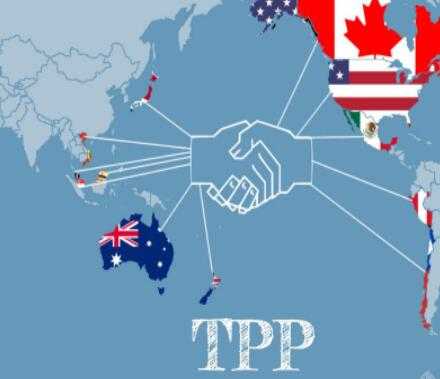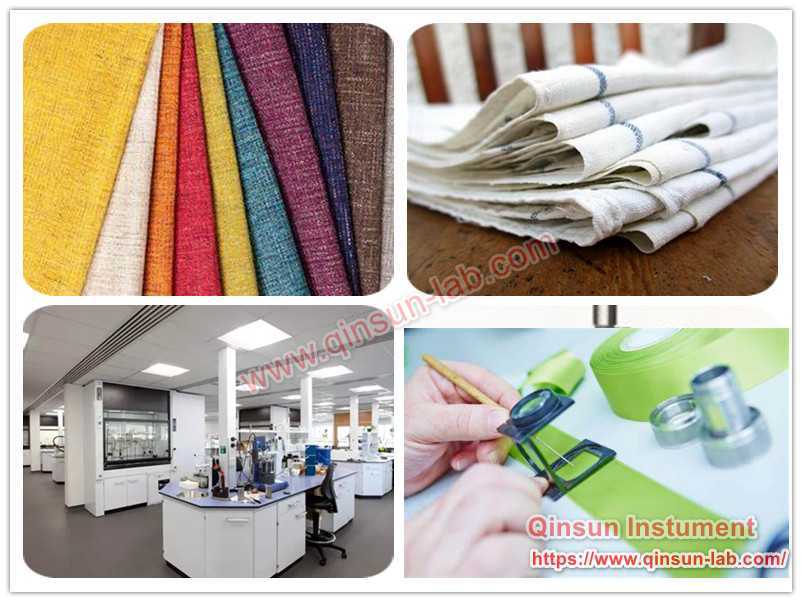Site: Home > News and events 
What impact does the U.S. withdrawal from TTP have on China's textile testing equipment exports?
Textile testing equipment is a means of textile production development, from simple testing tools to manual mechanical testing equipment, and then to modern testing equipment combined with electromechanics.
The U.S. officially announced the launch of TTP before, so what impact will the U.S. withdrawal from TTP have on the export of Chinese textile testing equipment?
What is TTP?
The Trans-Pacific Partnership Agreement (Trans-Pacific Partnership Agreement), also known as "Economic NATO", is currently an important international multilateral economic negotiation organization. P4). It was initiated by New Zealand, Singapore, Chile and Brunei in the member countries of the Asia-Pacific Economic Cooperation Organization. It was a set of free trade agreements on multilateral relations that was brewed in 2002. It was originally called the Asia-Pacific Free Trade Area and aimed to promote trade liberalization in the Asia-Pacific region.


TPP member states will bring about a decline in the prices of products and services, and an increase in logistics speed. Countries can learn from each other's strengths, and consumers are one of the most direct beneficiaries. However, trade opening has always been a double-edged sword. There are areas that benefit, while others are "injured." The national interests of member states or the interests of certain industries may therefore be impacted by other countries. This problem is particularly prominent in terms of tariffs.
TPP negotiations began in March 2010. The negotiations consist of two main categories: one is the areas decided by the 12 negotiating countries such as the protection of intellectual property rights; the other is bilateral consultations such as the reduction or exemption of import tariffs for certain types of goods.
On October 5, 2015, the Trans-Pacific Strategic Economic Partnership (TPP) finally achieved a substantive breakthrough. The United States, Japan and 10 other pan-Pacific countries reached an agreement on the TPP. The 12 participating countries together account for 40% of the global economy. TPP will reduce or exempt tariffs on nearly 18,000 categories of goods.
On February 4, 2016, 12 countries including the United States, Japan, Australia, Brunei, Canada, Chile, Malaysia, Mexico, New Zealand, Peru, Singapore and Vietnam formally signed the Trans-Pacific Partnership (TPP) agreement in Auckland.
Trump announced that he would officially withdraw from the TTP after he took office, causing an uproar for a while. TTP is the English abbreviation of the Trans-Pacific Partnership Agreement. It is a set of free trade agreements for multilateral relations initiated by New Zealand, Singapore, Chile and Brunei since 2002, and this trade agreement has always been led by the United States by default. .
Trump's decision will bring great benefits to China. TTP’s zero-tariff and other trade standards are currently incapable of China. Therefore, this agreement has always been regarded as a tool used by the United States to deal with the Chinese economy in Asia. In this regard, China has also actively led the RCEP initiated by the ten ASEAN countries to reduce tariffs and non-tariff barriers and establish a 16-country unified market free trade agreement RCEP in order to counteract the US's trade exclusion from China.
QINSUN INSTRUMENTS believes that from the above analysis, it can be seen that the TPP is aimed at the exclusion of China’s foreign trade in the Asia-Pacific region. TPP members almost include all countries in Asia except China, especially the current Southeast Asian textile industry region. If the TPP agreement is reached, it will be China’s foreign trade schedule poses a serious challenge. At present, China is a major textile country, and many processes from textile raw materials to finished products and designs are inextricably linked with European, American and Southeast Asian countries. The Pacific Strategic Economic Partnership Agreement establishes bilateral reciprocal trade activities between member countries, thereby weakening China’s international trade strength. The first of these is the influence of the textile industry. If the TPP agreement is reached, China’s textile exports to Europe, America, and Southeast Asia will face relevant trade exchanges. With more restrictions and tariff increases, the advantages in international trade have declined. This is of course a fact that the entire textile industry does not want to see.


QINSUN INSTRUMENTS, as a leading enterprise in the textile testing instrument industry, is self-evident that TPP poses a threat to the export of textile instruments. At present, with China’s industrial transfer, many textile companies have moved their factories and production bases to Southeast Asia and other regions. As a local enterprise, the textile testing instrument industry will inevitably follow the development of textile enterprises. The export of textile testing instruments is imperative. The failure of the TPP plan is good news for the textile testing instrument industry. This will provide textile testing instruments. The difficulty and restriction of exporting foreign trade to corresponding countries are reduced, and it has a significant advantage in reducing the export cost of textile instrument enterprises.
China has also actively led the RCEP initiated by the ten ASEAN countries to reduce tariffs and non-tariff barriers and establish a 16-country unified market free trade agreement RCEP to counter the US's trade exclusion from China. RCEP is led by China, and Peru and Chile have clearly shown their interest in RCEP. Even Japan said that if TPP stagnates, it will shift its focus to RCEP.
QINSUN INSTRUMENTS believes that the completion of the RCEP agreement facilitates the export of textile testing instruments. Because RCEP includes important textile industry clusters in Southeast Asia and Central Asia, it can be said that it has paved the way for the export of textile instruments, such as export customs and restrictions. Obstacles, textile testing instrument companies should seize the opportunity to quickly start the process of foreign trade export.
2021-09-17 11:13
- Related News
Automatic Cross-Hatch Tester | PV 3952, Ford BN 108-03,GM N 14688 Compliant
Multi-Finger Scratch/Mar Tester | Automotive Plastics & Interior Materials T
Dental Material Color Stability Tester | ISO 4049 / YY 0270 / ASTM G155 Complian
Masks Bacterial Filtration Efficiency (BFE) Tester | YY 0469 / ASTM F2100 / BS E
Smoke Density Tester | ASTM E662 / ISO 5659-2 Compliant
Dry Microbial Penetration Resistance Tester | ISO 22612 / YY/T 0506.5
Dry Fallen Wadding Tester — YY/T 0506.6 | ISO 9073-10 | EN 13795-2
Fogging Tester | Automotive Interior Volatile Fogging Test System
